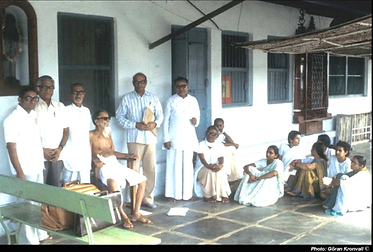LEPROSY CURED PERSONS
Leprosy cured person means a person who has been cured of leprosy but is suffering from:
-
Loss of sensation in hands or feet as well as loss of sensation and paresis in the eye and eye-lid but with no Manifest deformity.
-
Manifest deformity and paresis but having sufficient mobility in their hands and feet to enable them to engage in normal economic activity.
-
Extreme physical deformity as well as advanced age which prevents him/her from undertaking any gainful occupation, and the expression “leprosy cured” shall be construed accordingly

RPD ACT 2016
Section 34 (1) (c) of The RPwD Act, 2016, provides for 1% reservation in all categories of jobs in Government and public sector, for people with locomotor disabilities, and it includes “leprosy cured”. This is applicable to people who have 40 or more disability percentage.
THE MAIN SYMPTOMS OF LEPROSY INCLUDE
-
Muscle weakness
-
Numbness in the hands, arms, feet, and legs
-
Skin lesions: The skin lesions result in decreased sensation to touch, temperature, or pain. They don’t heal, even after several weeks. They’re lighter than your normal skin tone o r they may be reddened from inflammation.
What You Can Do to Help:
-
Many people think of leprosy as an ancient disease that was eradicated many years ago. But each year, thousands of men, women, and children all over the world develop this disease. Despite effective treatment, leprosy is one of the world’s most stigmatized dise ases, and people living with leprosy-related disabilities in many countries are shunned, denied basic human rights, and discriminated against. The stigma of leprosy affects the physical, psychological, social, and economic well-being of those with leprosy, contributing to the cycle of poverty in the affected regions.
-
During World Leprosy Day, we seek to increase public understanding of Hansen’s disease and tackle the social stigma attached to this completely curable disease.
How can you do your part?
-
Educate yourself about Hansen’s disease and share w ith friends and family that leprosy is a curable illness.Educating yourself and others about leprosy helps depict a positive image of leprosy and increase awareness about it in your community.
-
Promoting a positive image of leprosy helps focus on the abilities of the affected individuals rather than disability.
Mahatma Gandhi ji on Leprosy
Gandhiji believed that leprosy is not contagious and placed his predicament before the people living in Ashram at the morning prayers. Gandhi had a lifelong compassion for people affected by leprosy. He had known people affected by leprosy since he was a young child. At morning prayers, Gandhi shared his dilemna with his peers. They decided they would be willing to accept Parchure Shastri in their community.
Vinoba Bhave, 1895 - 1982, was the spiritual successor of Mahatma Gandhi. He is famous for the land gift movement, Bhoodhan movement, where people donated land to the landless poor of India.
In his relentless work on improving the life in the Indian village Vinoba Bhave soon realized that leprosy was a common illness that required their attention. A leprosy centre was therefore opened in Dattapur in 1936 with Manoharji Diwan in charge.
It was therefore quite natural that 43 years later the head of the National Leprosy Control Programme in India, Dr K.C. Das, when travelling in India visiting the member states and their control programmes, he also paid a visit to Vinoba Bhave.


